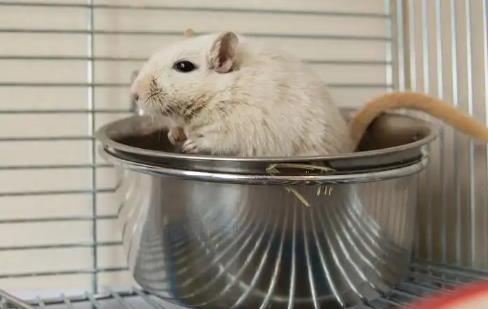Hamsters do not have a physiological period (menstruation) similar to that of humans.
According to existing research, as rodents, hamsters have significant differences in their reproductive systems compared to humans, and they do not experience the phenomenon of menstruation caused by the periodic shedding of the endometrium. The following is a comprehensive analysis:

1. Differences between the Definition of the Physiological Period and That of Hamsters
In humans, menstruation is a phenomenon of endometrial shedding and bleeding that occurs along with the ovulation cycle. However, hamsters are animals with an estrous cycle, and their endometrium does not shed periodically.
Experimental observations show that hamsters may occasionally experience vaginal bleeding, but this type of bleeding has no direct connection with the estrous cycle and is more likely to be due to other physiological or pathological reasons (such as minor injuries).
2. The Estrous Cycle Replaces the Menstrual Cycle
Hamsters have a high-frequency estrous cycle (for example, Syrian hamsters have an estrous cycle every 4 to 6 days). They show symptoms such as hyperactivity in behavior and a 22% increase in the metabolic rate, but there are no bleeding symptoms.
Behaviors during the estrous period include an increased speed of running on the wheel (up to 20 revolutions per minute), ultrasonic courtship calls (at 35kHz), etc., which are easily mistaken for manifestations of a "physiological period."
3. Sources of Controversy and Misunderstandings
Some viewpoints believe that hamsters have "irregular menstrual periods," but there is a lack of scientific basis for this. It may be a confusion between estrous behaviors or abnormal bleeding.
Authoritative materials clearly deny the existence of menstruation in hamsters. Their pregnancy manifestations (such as increased water intake and weight gain) have nothing to do with menstruation.
4. Abnormal Situations That Require Vigilance
If bleeding from the vulva of a hamster is found, it is necessary to rule out trauma, tumors, or reproductive system infections, rather than regarding it as a physiological phenomenon.
Conclusion: The reproductive physiology of hamsters centers around the estrous cycle, which is fundamentally different from human menstruation. Breeders should pay attention to changes in their behaviors and promptly distinguish between normal estrus and pathological abnormalities.
